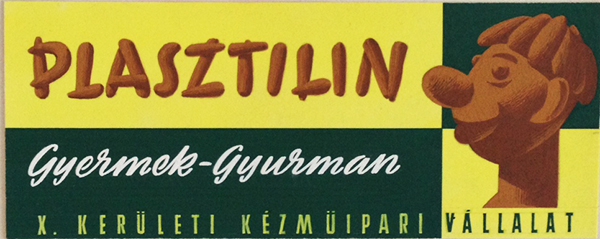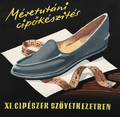
Description:
Plasticine is a kind of oil-based clay which was developed by the German Franz Kolb in 1880. „Oil-based clays are made from various combinations of oils, waxes, and clay minerals. Because the oils do not evaporate as does water, oil-based clays remain malleable even when left for long periods in dry environments. Articles made from oil-based clays cannot be fired, and therefore are not ceramics. Because the viscosity of oils decreases as temperature rises, the malleability is influenced by heating or cooling the clay. Oil-based clay is not soluble in water. It can be re-used and so is a popular material for animation artists who need to bend and move their models. It is available in a multitude of colours and is non-toxic.”
(source: wikipedia.org)
This small-sized painted artwork from around the mid-century was probably created as a cover design for a pack or box of plastilin. The product was sold by the 10th District Handicraft Company (X. Kerületi Kézműipari Vállalat) which appears to be written at the bottom of the design. The name is highlighted above, and there is a smiling face of a funny clay figure on the right. The yellow-green colourful background, the light-hearted figure and the inscription proves that this product was clearly targeted at children. A work by Lajos Vajda.











